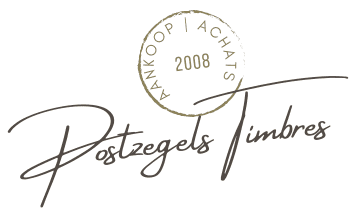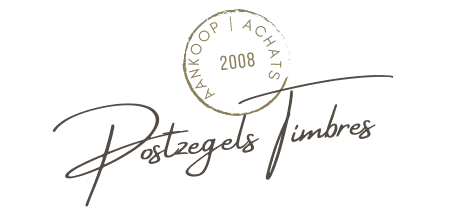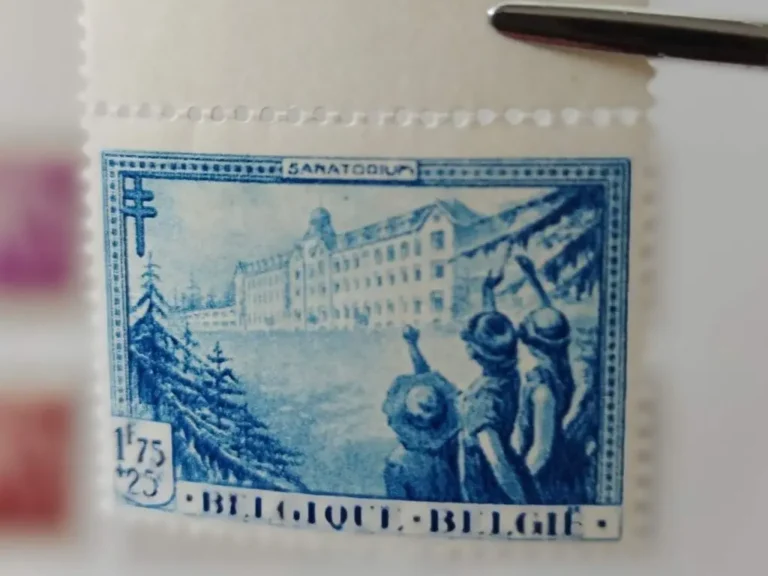Hi ! 🎉 Let us dive together in the fascinating world of obliterations in philately ; These brands that give life to our adored stamps You see, an obliteration is a bit like a fingerprint of your mail - unique and full of history. Imagine for a moment that each stamp is an adventurer, filling his suitcases with his own memories; And the obliterations are the fascinating stories that these travelers tell.
Let us not forget that the obliterations in philately are not only simple stamps! It is as if each obliteration was a selfie taken at a key moment. 😉 Your stamp will remember it for eternity. And by the way, how important are you? This is where the mystery is revealed! Whether it is a comic or majestic obliteration, it transcends time and nourishes us with a sense of history which would make the great Pascal itself. So, ready for the adventure? Let's go!
- Fundamental : the obliterations indicate the date and the place of sending.
- Historical importance : they add an authentic and contextual dimension to stamps.
- Types of obliteration : manual, mechanical and commemorative.
- Manual obliterations : handmade by hand, often decorated with elegant stamps.
- Mechanical obliterations : made by machines, with geometric shapes.
- Commemorative obliterations : celebrate special events with unique designs.
- Artistic aspect : Some obliterations incorporate illustrations or logos, enriching the aesthetics of stamps.
- Specialized collection : collectors are looking for clear and unique obliterations.
- Impact on the value : a well -positioned obliteration can increase the value of a stamp.
- Estimate by experts : call on a specialist to assess precious obliterations.
When we talk about the obliterations in philately , we do not just mention brands! No, no; These brands are a whole universe; A world of stories and stories. They slip on our small pieces of paper to give them a soul. Imagine a wild animal that evolves in a dense forest! The obliterations are a bit of that, they bring life and character to the stamps.
What is a obliteration?
In a few words, an obliteration is like a fingerprint for mail. She attests that a stamp has been used. Like an artist's masterpiece, each obliteration tells a different story. Whether it's a beautiful cachet or a sudden brand, it emphasizes where and when your stamp has traveled. Have you ever thought about that? These brands are like memories engraved forever. No wonder they are interested in collectors so much!
The different types of obliteration
Oh there! There are so many types of obliteration; It is like an unlimited buffet for a philatelist. So what's up to it? The first category is manual obliteration. It's a bit like a hug done by hand! Sometimes it is a beautiful colored ink cachet that we love to see.
Then you have mechanical obliteration: it is fast and efficient, a bit like a robot that prepares coffee. We love it, in any case, especially for stamps frequently sent on a daily basis. And I forgot the icing on the cake, the commemorative oblites! 🎉 These little wonders arise to celebrate events, such as hero birthdays or memorable dates! A real gift for the eyes.
The artistic aspect of oblites
Let's talk about a little art, because yes, the oblites also have an artistic aspect! Yes ; They can be designed with care, mixing creativity and utility. Think of these superheroes with brilliant costumes; Some cachets are just as flamboyant with drawings and logos. Each obliteration is a small masterpiece. You could almost hang some stamps on the wall like you making an exhibition! 🖼️
Collection and search for obliterations
If you are passionate about obliterations in philately , know that there are many adventurers here; You can specialize in the search for stamps with clear oblites. Think of it as being a treasure hunter. A advice: do not hesitate to observe every detail; A well -positioned obliteration can pay big! If you really want a rare pearl, contact Pascal on 0473 444 706; He is the maestro of ancient stamps and will be able to orient you in your journey!
The impact of the bonds on the value of the stamps
Did you know that the oblites can increase the value of a stamp as quickly as a racing car on a race track? 🔥 Indeed, a well -centered, clear, and elegant obliteration can shine the price of a stamp. But beware! An excessively invasive or poorly placed obliteration is a bit like an irritating horn noise in a concert! It can lower its price. So pay attention to every detail!
Philatelic tips
Finally, here is a fun little tip: if you really want to stand out, try to create a journal of your discoveries and your favorite oblites. Make fun; Put stickers, write anecdotes on stamps; It's like a scrapbook but for your postal adventures! 🐾 You can even imagine a fictitious character who travels with these stamps; A real hero of modern times!
So, ready to dive into the fascinating universe of obliterations in philately ? Have fun; Each stamp has a story to tell. Remember, passion and friendship with stamps is what makes the journey even even tasty. Do not forget, if you have treasures to buy, contact Pascal on 0473 444 706. The world of stamps is waiting for you; Don't let him go! 😉
🔍 Obliterations in philately: understand their importance and their classification 📮
| Type of obliteration | Concise description |
|---|---|
| 🖊️ Manual obliteration | Handmade, often with a single date stamp. |
| ⚙️ Mechanical obliteration | Made by machines, leaves uniform and repetitive marks. |
| 🎉 Commemorative obliteration | Famous events, often decorated with artistic patterns. |
| 🔍 Historical importance | Provides evidence of the routing and use of stamps. |
| 💎 Value for collectors | A well -made obliteration can increase the value of a stamp. |
| ♻️ Obliteration darkness | Poorly applied obliterations can decrease the value of a part. |
| 🖼️ Aesthetic aspect | The obliterations can add an artistic dimension to the stamps. |
The obliterations in philately: understand their importance and their classification
Ah, the obliterations in philately ; You know, these small cachets that seem so trivial, and yet they are full of surprises! Imagine a stamp as a mysterious letter; Each obliteration is a page of its diary! 📜 It is a real novel that is woven over the centuries. Even Pascal would have loved it, because behind each obliteration, there is a story to tell ...
The obliterations are not just a simple brand; They can be real works of art for collectors. If you look at their classification, you will realize that each type has its own character. For example, a manual obliteration is like a craftsman who affixes his touch on a work, while a mechanical obliteration, it is more like a coffee machine that distributes the same taste each morning. Practical, but sometimes a little bland! ☕
Remember, when you find a stamp with a rare obliteration, it's like finding the Saint Grail of collectors! Suddenly, you become Indiana Jones; The importance of obliterations in philately is revealed to you fully. They transform pieces of paper into treasures. So, do not hesitate to scrutinize each issue, each date: an obliteration can increase in value like a soap bubble under the sun! 🍭
In summary, the obliterations in philately are much more than a need for mail routing; They keep the essence of past stories. Whether you are a novice or an expert, take the time to explore this fascinating dimension. You never know what surprise could wait for you under a cachet: a splendor of history, a touch of art, and a good suspicion of passion! So, ready to take off towards the wonders of philately ? 🚀
FAQ on obliterations in philately
What is a obliteration? 🤔
An obliteration is a mark affixed on a postage stamp, an envelope or a postcard which indicates the date, the place and other information concerning the delivery of the mail.
Why do we use obliterations? 📬
Obliterations are used to avoid the fraudulent reuse of stamps and guarantee the right delivery of mail. They also bring a historical dimension to stamps.
What are the types of obliteration? 🔍
There are several types of obliteration, in particular manual obliteration, often carried out by hand, the mechanical obliteration carried out by machines, and commemorative obliteration, issued to celebrate a specific event.
What is the artistic importance of obliterations? 🎨
Obliterations can have an artistic character, especially those that are illustrated or commemorative. They add a unique aesthetic to stamps, telling a visual story of their postal journey.
How to collect obliterations? 📚
Collectors often focus on clear and well centered obliterations. Some specialize in the obliterations of a particular country or historical period to enrich their collection.
Do obliterations influence the value of stamps? 💰
Yes, the obliterations can impact the value of the stamps. Clear and well -positioned obliterations can increase value, while poorly placed or illegible obliterations can decrease their attractiveness for collectors.
The obliterations in philately: a wealth to discover
| Type of obliteration | Succinct description |
|---|---|
| Manual | Handmade, often unique with local details. |
| Mechanical | Produced by machines, uniform and fast, facilitates sorting. |
| Commemorative | Celebration of events with special designs. |
| Illustrated | Incorporate images or patterns, adding an aesthetic value. |
| Interest centers | Focuses on specific themes, such as historical characters. |
| Short-lived | Temporary use, often linked to specific occasions, such as festivals. |
| Authenticity | Clear obliterations attest to the truth and the value of a stamp. |
Glossary of obliterations in philately
In the fascinating universe of philately, obliterations play a crucial role. They are not content to mark a stamp, but bring a historical and aesthetic depth to each collector's room. Understanding the different facets of obliterations makes it possible to better appreciate the richness of the philatelic world.
An obliteration is a brand affixed to a postage stamp, an envelope or a postcard in order to indicate essential information concerning the shipment, such as the date and place of shipment. Its introduction was mainly motivated by the need to prevent fraudulent reuse of stamps, while ensuring a good delivery of mail. These brands have thus become witnesses of an era and popular collectibles.
The different types of obliteration are multiple and varied. Among them, we find:
a) Manual obliteration : this is carried out by hand by a postal employee. It is often in the form of a cachet to date or a round cachet, bearing the name of the post office as well as the date of dispatch. This type of obliteration is highly sought after by collectors, because it attests to authenticity and artisanal know-how.
b) Mechanical obliteration : made by machines, this type of obliteration is characterized by lines, bars or circles. These technological markings generally include date and place indications uniformly. Although less poetic than their manual counterparts, they are still appreciated for their precision.
c) Commemorative obliteration : issued to underline special events, this type of obliteration often has developed designs aimed at celebrating a significant date or event. Whether for an exhibition or a birthday, these obliterations add a festive touch to the stamps concerned.
Beyond their practical function, obliterations can also be considered as works of art. Some postal brands have an artistic aspect, encompassing symbolic drawings, logos or symbols, thus enriching the cultural, historical or geographic history of the place of obliteration. These unique elements add a particular aesthetic to the stamps, transforming each piece into a real testimony of a postal journey.
For collectors , obliterations represent a specialization area in itself. Many are looking for stamps with clear, well -centered and legible obliterations. Certain philatelists immerse themselves in the quest for specific obliterations, whether those coming from a particular country or a determined historical period. Collecting obliterations makes it possible to constitute unique philatelic sets, offering a fascinating overview of the evolution of communications through time.
Finally, it is essential to note that the obliterations influence the value of the stamps. Indeed, a clear and well -positioned obliteration can considerably increase the value of a stamp while attesting to its authenticity. On the other hand, a poorly placed or illegible obliteration can reduce its value on the market. For demanding collectors, consulting an expert in philately to estimate these obliterations can be beneficial.
How to recognize an interesting obliteration? The clues that do not deceive 🕵️♂️
When you hold a stamp between your fingers, take the time to observe your obliteration well: it's a bit like reading between the lines of an old manuscript. The clues are there, just spot them. A clear date? An exotic or disappeared city name? An artistic or unusual cachet? These are strong signals that can make all the difference. Sometimes a simple detail - an unusual shade, a rare symbol - can transform a banal stamp into a small philatelic nugget. It is in these subtleties that the most beautiful discoveries often hide. So, get your magnifying glass and let your detective eye speak: each obliteration has its secret to deliver! 🔍





